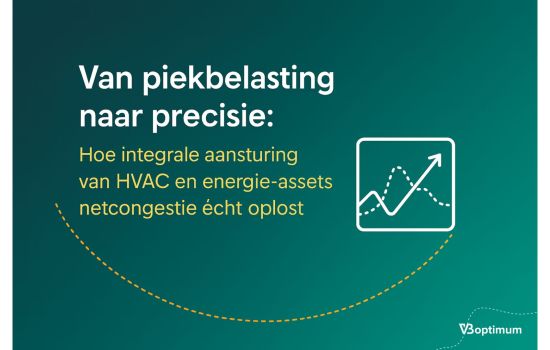From Peak Load to Precision: How Integrated Control of HVAC and Energy Assets Truly Solves Grid Congestion
The problem: Peaks, limitations and waste
Dutch buildings are increasingly facing a tough dilemma: the heat pump needs to run, cars need to charge, and the sun isn’t shining – all at the same time. The result? Morning peaks with power overruns, penalties for exceeding contracted capacity, and a grid that leaves no room for growth. Grid congestion is no longer a future scenario; it’s the new normal. And many buildings are just standing by, watching it happen.

Analysis – Why conventional solutions fall short
Often, batteries, charging stations, and solar panels are used as standalone solutions, disconnected from each other and from the HVAC system. That works fine as long as there are no overloads. But when demand and supply fluctuate – for example, on a cold winter morning without sunlight – the lack of coordination between these assets actually increases grid stress. Heat pumps operate reactively, batteries charge at the wrong moments, and grid load gets out of control. Without coordination, there’s no flexibility to balance the system or prevent overloads.
The solution – One system, all assets: VBsynergy as the energy conductor
VBsynergy does exactly what’s needed: it orchestrates all flexible energy assets – from solar panels to heat pumps and from charging stations to batteries – in an integrated, real-time, and predictive way.
The intelligent combination of an Energy Management System (EMS) and an HVAC Digital Twin makes this possible:
- The EMS manages batteries, charging stations, and solar panels based on predicted energy prices, solar yield, and grid capacity.
- The HVAC Digital Twin controls the heat pump predictively, leverages the building’s thermal storage, and prevents unnecessary consumption during peak periods.
Application – A winter morning without overloads
A real-world example from an office building with a 400 kW connection says it all:
- 00:00 – 07:00: The battery charges overnight with low-cost electricity. The heat pump preheats the building, smartly using its thermal mass.
- 07:00 – 09:00: During the expected morning peak, the heat pump’s power is reduced. The battery provides support, and charging stations operate at partial capacity.
Result: Grid load stays below 400 kW, with no loss of comfort or charging sessions.
Without this coordination, the building would peak at 480 kW – causing penalties and grid issues.
Vision – From buildings to active energy network players
With VBsynergy, a building evolves from a passive energy consumer into an active energy orchestrator: flexible, predictable, and responsive. VBsynergy not only provides control over peaks but also unlocks strategic opportunities:
- Participation in imbalance and EPEX markets
- Avoidance of costly grid upgrades
- Maximized battery returns
- Automated reporting for ESG/EBS/GACS compliance
Reflection – The power of integration
The energy transition poses complex challenges for buildings. Yet it’s precisely an integrated approach that creates space: by intelligently combining electrical and thermal assets, buildings gain flexibility, control, and financial performance.
Not every building needs to become a power plant.
But every building can be controlled more intelligently.

